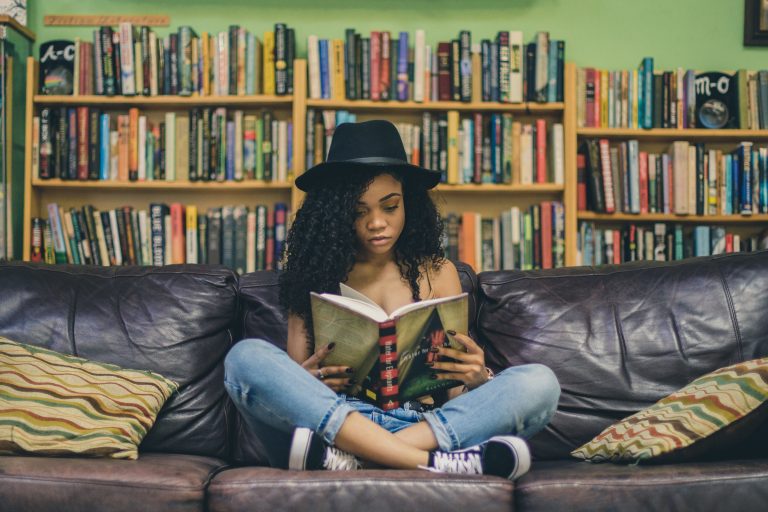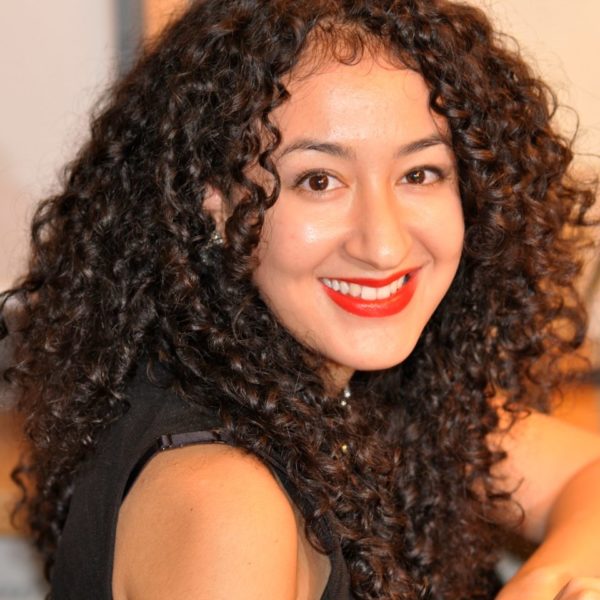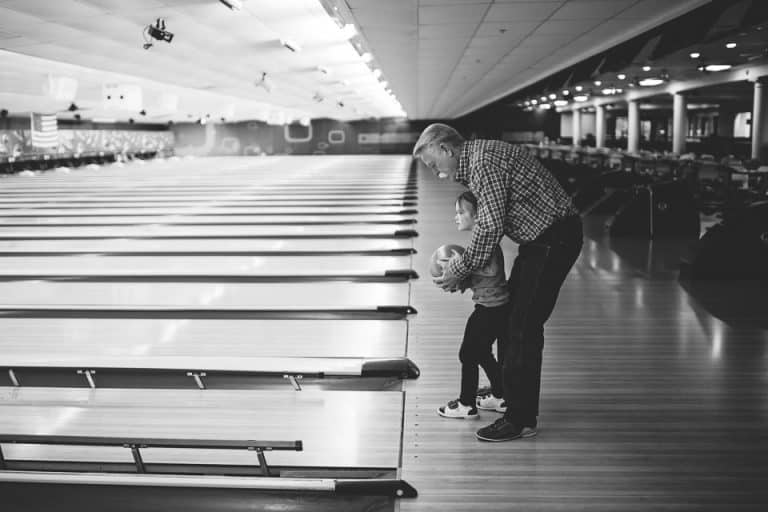
Image by iam Se7en/Unsplash.
Reading Is an Exercise in Empathy
Almost two decades before Ava DuVernay’s adaptation of A Wrinkle in Time, I wrote my own story based on the characters in Madeleine L’Engle’s novel. The driving impulse was not “to be an author” or, that classic seed of fanfiction,“to insert a thinly-veiled version of myself as someone’s love interest” (I was eight). It wasn’t even “to pick up where the book left off.” The only reason I took any interest in the family computer, picking out words from a senseless arrangement of letters, was to gain admittance into L’Engle’s world through a direct portal: the medium in which she worked. Kind of like tessering. But walking around inside the story wasn’t just an opportunity to luxuriate in the details of a world that I loved, or to speculate on the ones I didn’t understand — it was also a chance to correct the things that didn’t agree with me. Despite my childhood love for A Wrinkle in Time, alongside that love I felt a competing conviction: that L’Engle was utterly wrong about certain details of the world she’d created.
This feeling had nothing to do with experimental physics or tesseracts or time-space travel — my gripes were with the quotidian, things like the the shape of the Murrys’ dog’s head. My problem wasn’t exactly that these details didn’t ring true; it was more a frustration at their failure to conform to my mental image of them. With the family dog, Fortinbras (a name that, lacking the Shakespearean referent at the time, I subjected to the same levels of mangling I later brought to pronunciations of “Hermione”), I disliked the way L’Engle dwelled on the “slender darkness” of his head. Surely, my logic went, faced with a name as unwieldy as Fortinbras, no one in their right mind would envision such a creature as anything other than massive and shaggy. My imagined version swelled against the shell of the textual description until the latter cracked and lost purchase, with my story becoming a gallery for these revised details. This was how completely I inhabited L’Engle’s world — I felt I had the authority to claim when she had gotten it wrong.
Which means that when I learned of DuVernay’s film adaptation and the miracle of a black Meg, I wondered for the first time: Why wasn’t that one of the book’s realities I refused to accept? If I didn’t think twice about swapping out dog breeds or house layouts for my preferred versions (even when such decisions ran counter to the cover art, which I usually took to be authoritative), why didn’t it occur to me to mentally rewrite Meg Murry — the character in the book with whom I most ardently identified — as biracial, like me? Why, in other words, were Meg and her world places in which I seamlessly saw myself, despite the fact that, for instance, Meg can easily “[run] her fingers through her mouse-brown hair,” but if I (or Storm Reid, who plays Meg) tried that at home, I’d pull clumps out at the root?
Part of the reason, I imagine, is that non-white children intuit early in their reading lives that looking like their favorite character is a luxury, not on offer. Unless we struggle mightily against the specifics of a text that at best, like J.K. Rowling’s claims about not-not-black-Hermione, don’t explicitly rule out the possibility of a racialized character altogether, we learn to find alternative grounds for identification. In A Wrinkle in Time, I would have been faced with the herculean task of imaginatively fighting my way past a squad of several blondes (Meg’s three younger brothers), an intimidatingly beautiful redhead with “creamy skin” (her mother), and Meg’s own mousy brown mop. Honestly, it’s easier just to change the dog.
But there’s also something in L’Engle’s work that, for me, made it about different questions than simply “Where am I in this book?” A Wrinkle in Time invited identification across difference, capturing a quality of childhood that hinges more on the emotional than the visual. This is a novel that begins at midnight in a drafty attic, but immediately ushers you downstairs into a warm kitchen with cocoa and sandwiches. It hyperbolizes empathy in the form of a child, Meg’s little brother Charles Wallace, who uses his telepathic abilities to anticipate the emotional needs of his mother and sister. It takes an almost comedic glee in childhood precocity, attributing to a fourteen-year-old dialogue like, “I must remember I’m preconditioned in my concept of your mentality.” It’s theatrical almost to the point of parody, and yet it’s such a thrill for a nerdy kid to encounter a line like this; its implicit promise that there are others like you who take the same joy in language and that, even if you’re a self-described “oddball” like Meg, somewhere beyond these pages you might eventually find your people.
All of which is to suggest that it is a book that throws down the welcome mat, grabs you by the hand, and pulls you in. It champions as the center of attention a girl who both acts out and questions her own deservingness of any attention at all. Weirdos are especially welcome here. L’Engle’s participatory, inclusive aesthetic is much of why I was so willing to both project myself into the book and impose upon it my own tiny acts of creation. If something felt wrong about the layout of its world, I knew she wouldn’t begrudge me a few minor renovations.
Nor would she begrudge DuVernay her directorial vision. DuVernay too has knocked on the door, been welcomed in, and moved a thing or two around. Rather than an entirely white family, the Murrys of 2018 are a mixed couple — a black mother (played by Gugu Mbatha-Raw) and white father (Chris Pine) — with a biracial daughter (played by the fierce, and fiercely loving, Storm Reid) and an adopted Filipino-American son (nine-year-old Deric McCabe, whose exuberance shifts with impressive ease from adorable to terrifying when the story calls for it). All of a sudden, I was offered more than just a hero with whom I shared intellectual precocity and emotional intensity — I had one who shared my hair.
DuVernay’s innovations go deeper than merely diversifying the cast. Imagine if black Hermione had also gone to Black Hogwarts. The characters in A Wrinkle in Time attend the fictional James Baldwin Middle School, where posters of Maya Angelou hang high on hallway cork boards. Mrs. Which, the head of a trio of astral-plane warriors and the film’s closest thing to a deity, is played by Oprah Winfrey. The novel’s fixation with Meg’s frizzy hair assumes an edge onscreen: when Calvin O’Keefe, Meg’s nascent love interest, first tells her, “You know, you have great hair,” her brush-off is a given for the black female viewer. Of course she wants him to shut up — no doubt she’s had white boys trying to touch her hair for the past thirteen years. The viewer’s recognition of this shared history makes Meg’s eventual acceptance of the compliment, and corresponding acceptance of herself as deserving it, even more moving.
It was a doubled satisfaction that I got to experience in the theater: the comfort of re-entering a remembered world, and the pleasant shock of recognition at having the familiar speak to me in a more intimate way. DuVernay’s casting was an unexpected gift, one that I wish I’d known how to ask for as a child reader and filmgoer. The lesson of her casting is a crucial one: To adapt a story and replace the majority of its white characters with characters of color is a weight that any worthwhile source material can handily bear, whether in a big-budget Disney film or the cinema of your own private reading experience. At the same time, I’m grateful that I didn’t let my need to see myself obstruct my enjoyment of texts like this one. If I’d felt shut out of the original story because of a white Meg, I might only have loved the book after I’d seen the film — but without a preexisting love for the book, I might never have seen the film at all. Or at least, I might not have been moved by it; at times it’s cartoonishly mystical and the first half was a real Fortinbras. Still, I cried upward of half a dozen times.
For white viewers, who have historically had less work to do in order to use stories as reflective surfaces, the film will be something different. It shares the inclusiveness of its source material, offering precisely what I discovered when I read A Wrinkle in Time as a child: the invitation to identify across, and in spite of, difference. It’s the same skill I spent years learning with the legions of little white girls I met in books and film and classes. When I was younger, my reading practices were absorptive and uncritical enough that I could barge into any story and lose myself in anyone’s skin. The impulse was never “Is this what I’m like?” but “Is this what I could be like?” or, even better, “Is this what other people are like?” — concerns that I don’t regard as consolation prizes for lack of representation, but ones that I found just as thrilling and generative. I didn’t, and still don’t, only approach stories looking for versions of myself. But I am certainly more particular about the people with whom I am willing to claim literary kinship.
It’s so important that younger readers — and a broader range of young readers — now have the chance to develop that critical muscle at an earlier age, experiencing realities like the West African-inspired world of Tomi Adeyemi’s Children of Blood and Bone or Black Lives Matter in Angie Thomas’s The Hate U Give. But it’s also crucial not to lose sight of the power in encountering difference on the page, which gives rise to the need for representation, but also the limits of grounding identification in visuality: writing off a text because you don’t see yourself in it can be a dangerous foreclosure of dialogue and empathy. I find it less useful to demand “Why didn’t you include x identity category” of dead write writers and prefer to dedicate more time and attention to finding, engaging with, and championing the work of those living authors — those who embody precisely the kind of identity that has been written out of the “mainstream” version — that do.
My edition of A Wrinkle in Time has an author’s introduction where L’Engle comments on the “beautiful new covers for the Time Quartet,” which she interprets as an “indication that stories have a life of their own, and that they say different things to different people at different times.” It’s interesting that so many of the mixed-to-negative reviews of the film have questioned this book’s adaptability. To me, this has always been a welcoming text, one that is willing to extend a hand and invite you in, along with your wild ideas. I certainly intuited that impulse. I think DuVernay did, too.
This essay was originally published on Electric Literature. It is reprinted here with permission.


Share your reflection